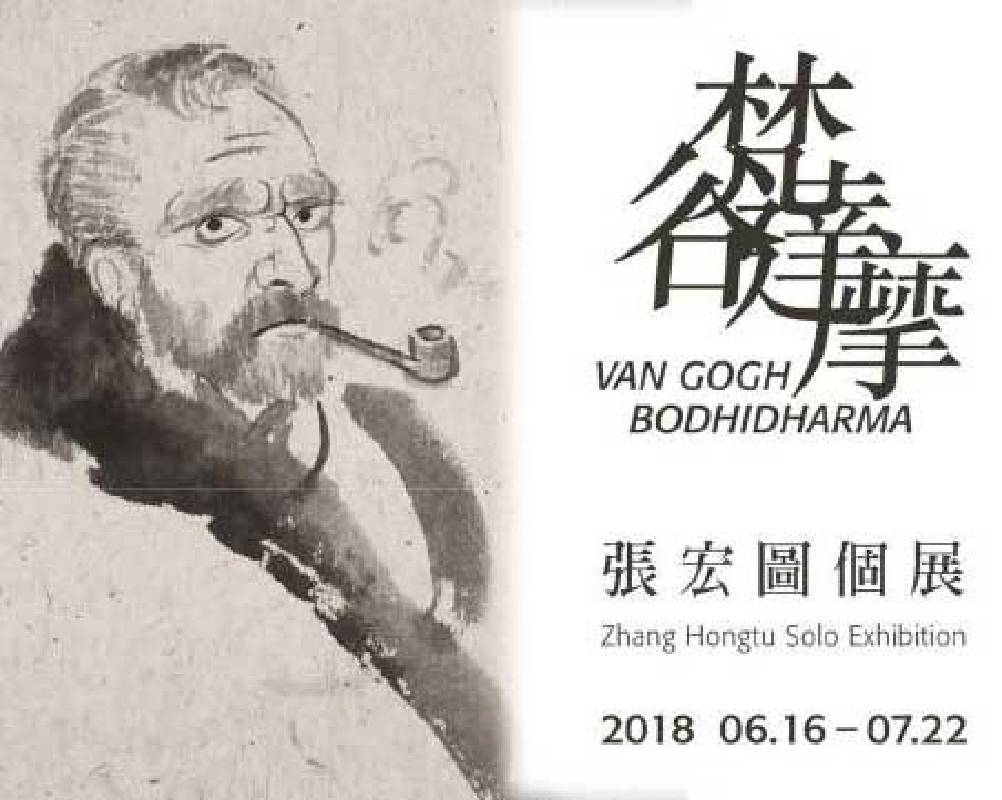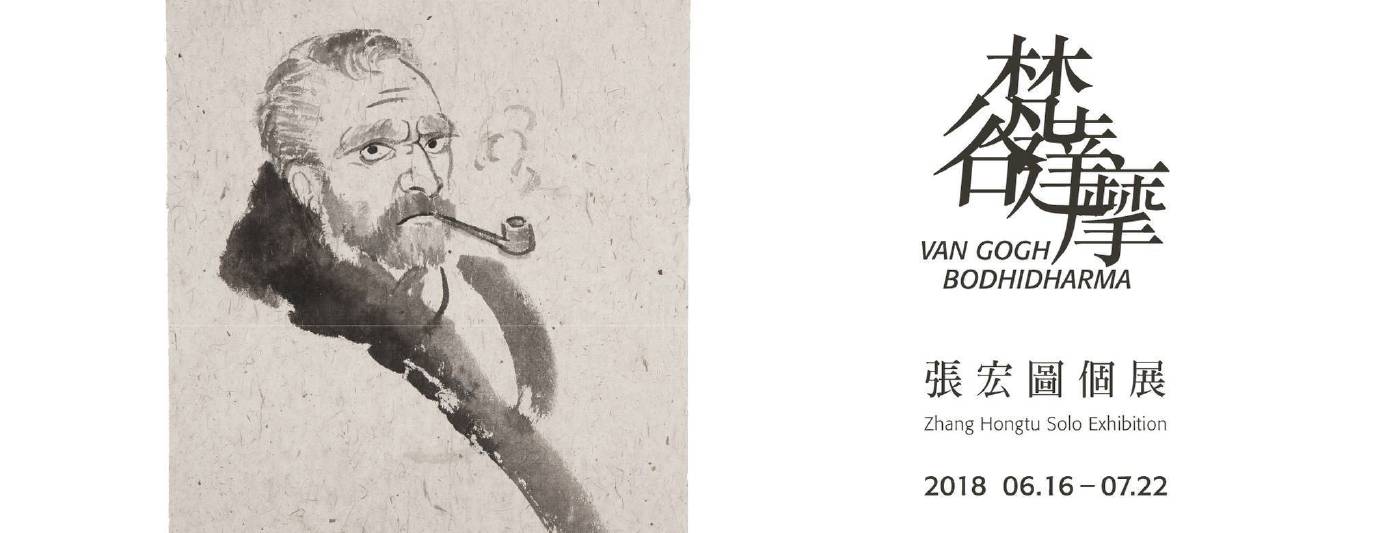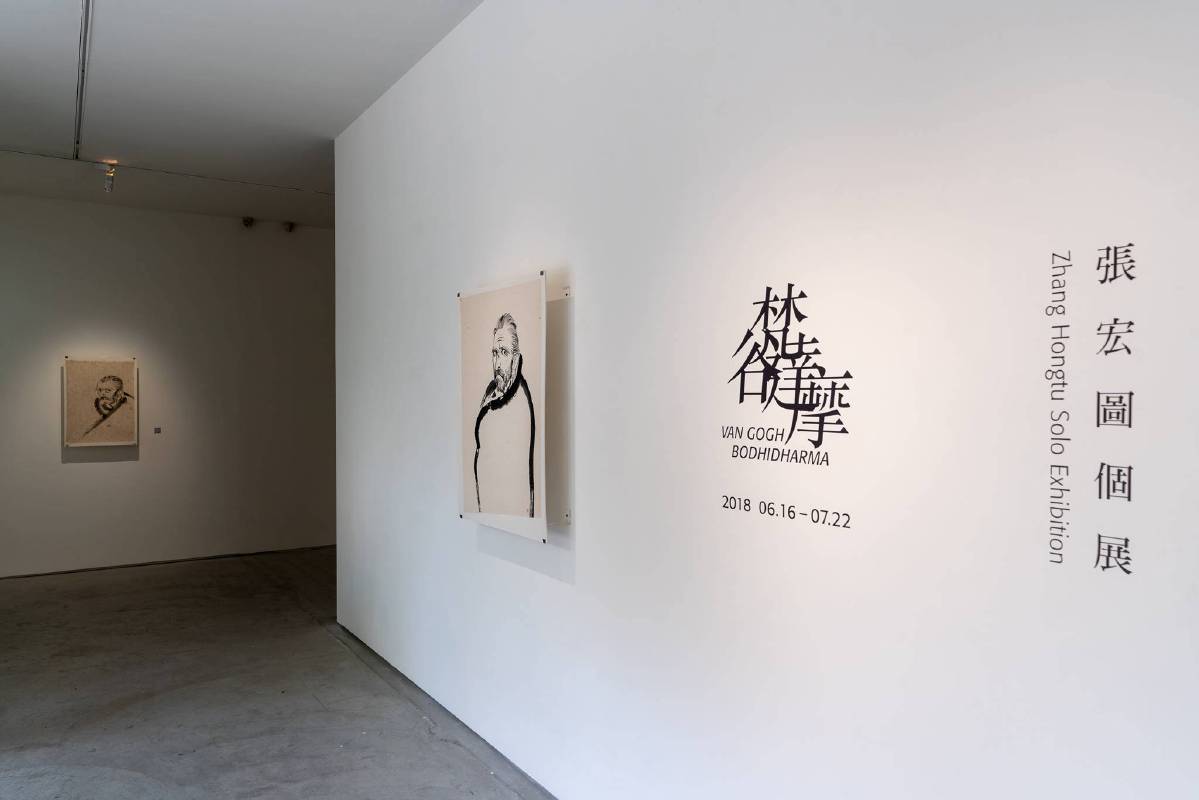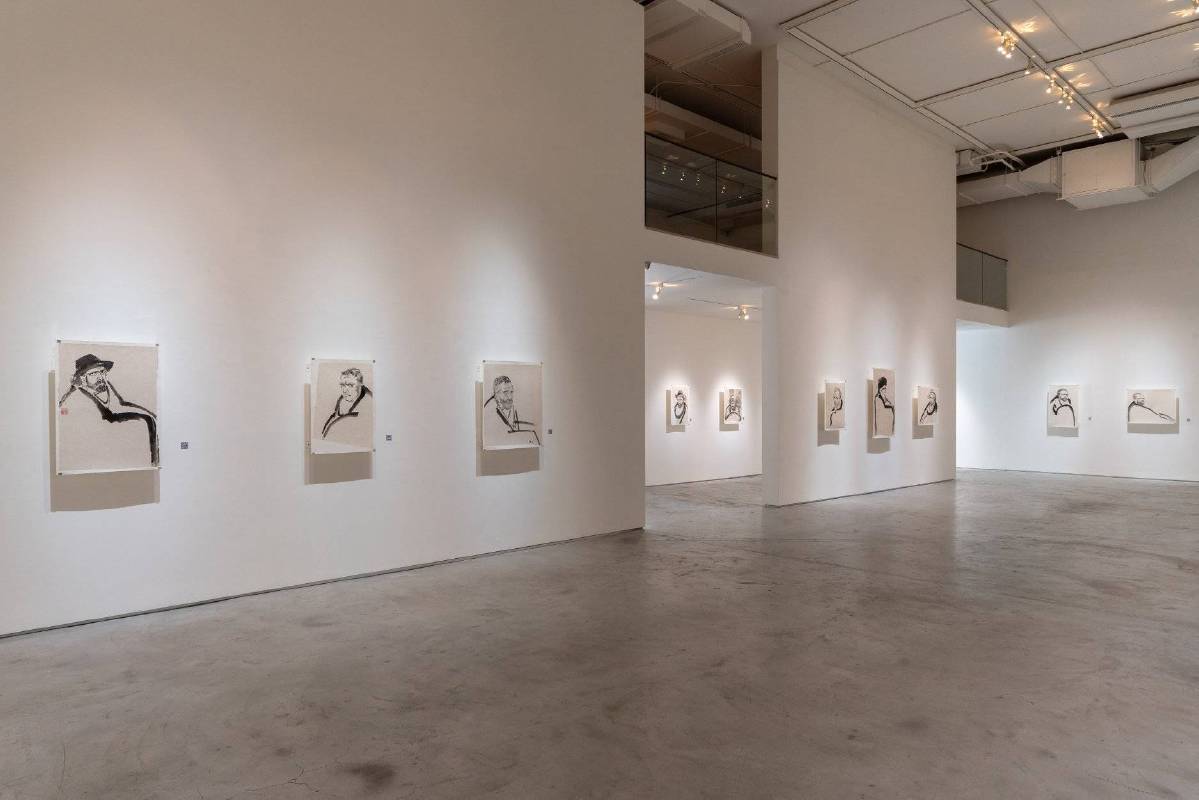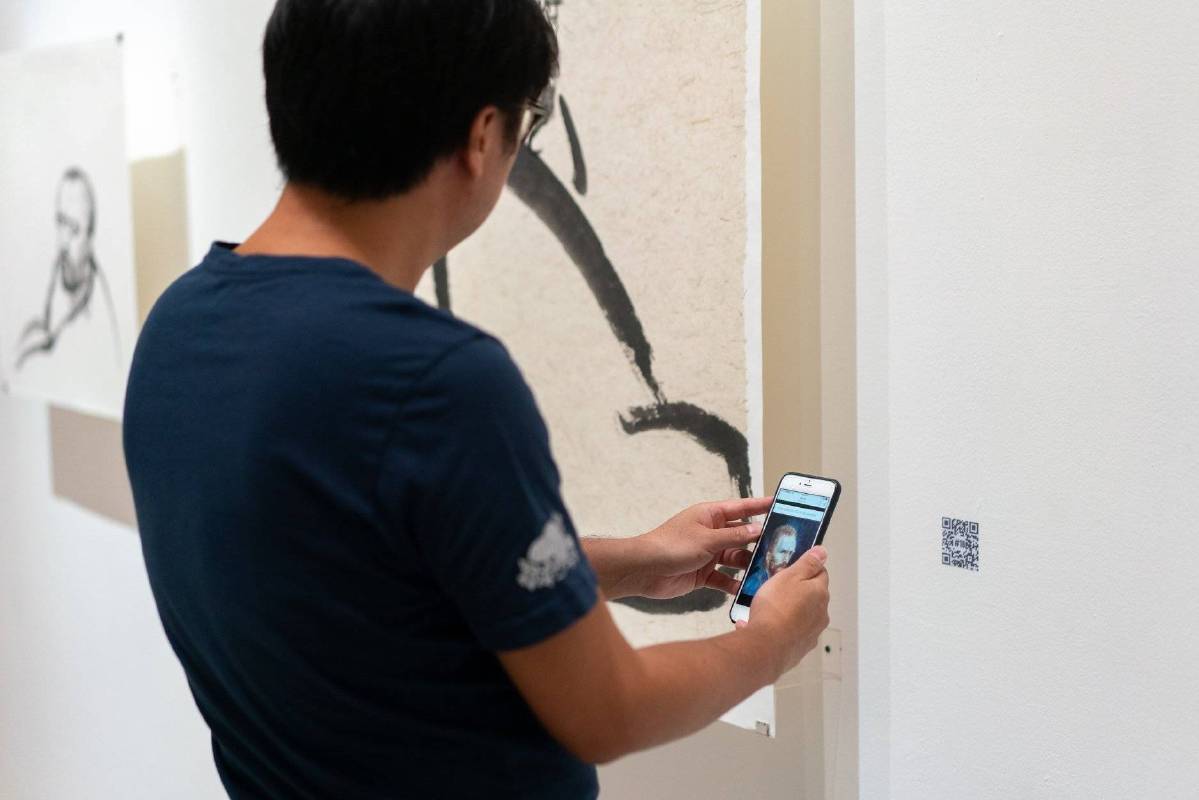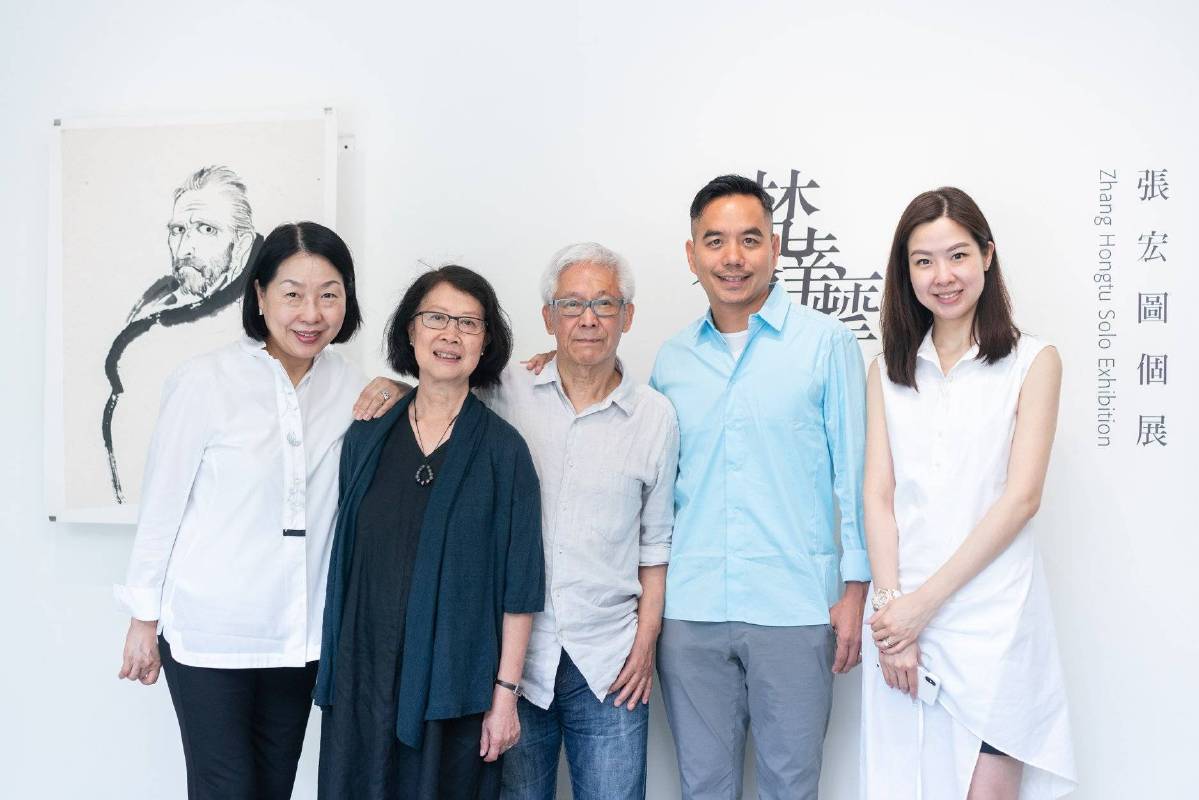耿畫廊
【梵谷/達摩─張宏圖個展 Zhang Hongtu Solo Exhibition】
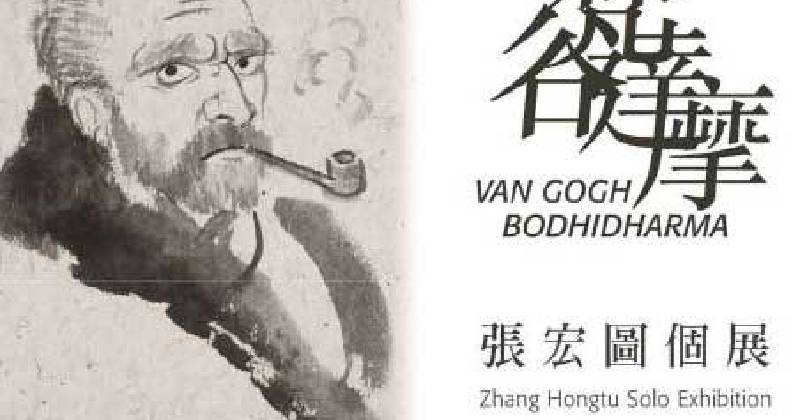
-
展期
日期:2018-06-16 ~ 2018-07-22
-
地點
114 台北市內湖區瑞光路548巷15號
-
參展藝術家
張宏圖
-
本次展覽「梵谷/達摩」,是張宏圖於2007年開始創作並完成於2014年的39件由梵谷的自畫像重製為禪風達摩的作品,這39件做為一個整體的作品,象徵了梵谷在1886年至1889年,生命最後四年多的時間對自我的形象描述。梵谷與達摩,這兩個看似時空背景相去甚遠的文本,卻因梵谷在接觸日本浮世繪後開始產生了連結。梵谷對日本藝術的迷戀,除了曾多次臨摹、重製浮世繪作品,也明顯反映於自己的作品風格中;甚至在1888年他送給高更的自畫像中,他更以日本和尚自居,形容自己除了作為一位印象派畫家之外,更是一位虔誠的僧人。儘管日本藝術對梵谷的影響甚大,但終究無法擺脫歐洲繪畫媒材與新印象主義風格的本質,仍舊只能以他熟識的方式趨近他所嚮往的日本藝術。因此,當梵谷表明自己在畫中看起來像是一位日本僧人時,讓張宏圖查覺到兩者之間文化混血的線索,並以禪意繪畫的形式重新繪製梵谷的肖像,藉達摩的造型重塑他外觀,讓他無論在外觀或精神上都真的成為他所心向神往的僧人,而且是如同祖師達摩般的「胡僧」,堅定、慈悲、超脫且睿智。
對張宏圖而言,梵谷/達摩的再製並不單純只是意味著兩者在歷史脈絡上的交集,因為文化的交換與生產是持續不斷且有機的;日本藝術追源究柢,是受到佛教、禪宗思想的影響演變至今;在中國與日本弘揚的佛教禪宗,是祖師達摩在南北朝時期自印度傳入中國的,融混著文人畫的特質,到了宋元交際時期發展出獨特的禪意繪畫,隨著禪宗的傳播,禪意繪畫的美學與思想得以影響整個漢字文化圈,而時至今日流傳的達摩形象也是奠基於此。甚至在50年代因國際思潮的交流讓禪學得以被歐美藝術家接納,從而成為眾多觀念藝術家核心概念之一。
展覽中除了39件繪於紙上的水墨作品外,張宏圖在作品旁搭配了一個Qrcode,讓觀眾可藉此對應每件作品與梵谷自畫像的資料,同時也展出了自水墨達摩至油畫梵谷自畫像的影像漸變錄像;無論是中國傳統山水或是梵谷的肖像,對張宏圖而言都是萃取審美觀念的對象,張宏圖藉由影像與新媒體的功能,除了讓觀眾對比作品與作品間的差異外,更希望藉此更具體化他持續實驗的美學觀念。
關於張宏圖
張宏圖,1943 年生於中國甘肅省,他的藝術養成始於中國,然而在經歷中國文革與文化大躍進等波折後,在80年代離開中國、定居紐約,紐約的多元文化環境給予他創作靈感,多方嘗試各種不同於以往的創作手法與媒材,過往的生命經歷伴隨歐美當代藝術的刺激迸發,他藉由藝術創作解開過往的重重束縛,作品中洋溢無懼的開創精神。於1989年發生的六四天安門事件,使張宏圖重新關注中國的政治現況,並回想過去在中國的生活經驗,創作了一系列以普普藝術、達達藝術的形式嘲諷中共政治聖像(毛澤東)、或其他偶像的作品。後來張宏圖將創作重心轉向「山水」,自從1998年開始創作「中國山水畫再製」系列起,十幾年來張宏圖刻意模仿塞尚、梵谷、莫內等大師的筆法,中西並置的手法早已成為他個人鮮明的創作風格。他的作品跨越並逃脫了所謂「東方」、「西方」、「寫實主義」、「觀念主義」等等概念的限制,反叛且混血雜交的手法對既有的權威產生質疑,以此開闢另種審視藝術的新角度。
------------------------------
The current exhibition, Van Gogh / Bodhidharma, includes 39 works by Zhang Hongtu created between 2007 and 2014 that reimagine Van Gogh’s self-portraits as that of the Zen Bodhidharma. These 39 works, taken as a whole, symbolize Van Gogh’s self-perception during the last four years of his life, between 1886 and 1889. The two texts of Van Gogh and the Bodhidharma may seem worlds apart in time and space, but they find a point of convergence in Van Gogh’s encounters with Japanese Ukiyo-e painting. In addition to repeatedly emulating and reproducing Ukiyo-e paintings, Van Gogh’s infatuation with Japanese art was also clearly reflected in his own style; so much so that in a painting he gifted to Gauguin, he refers to himself as a Japanese monk. Beyond being a self-described impressionist painter, he was a devotee of Zen Buddhism. Although Japanese art had a significant influence on Van Gogh, he was ultimately unable to break away from the essence of European painting media and impressionistic style. He approached the Japanese art he loved through techniques familiar to him. Hence, when Van Gogh described himself as appearing like a Japanese monk in his own paintings, Zhang Hongtu detected a possibility of cultural coalescence between the two and applied a Zen painting style to re-create Van Gogh’s portraits, reshaping his appearance in the style of the Bodhidharma, so that he actually becomes, in appearance and in spirit, the monk he longed to be in heart and soul; a foreign monk with the resolve, compassion, detachment, and wisdom of the Bodhidharma.
Because cultural exchange and production is continuous and organic, the reproduction of Van Gogh/Bodhidharma for Zhang Hongtu is not a simple reference to a point of convergence of the two within a historical context. The search for origin and roots in Japanese art is the result of an evolution influenced by Buddhist teachings and Zen philosophies. The Buddhism that prevails throughout China and Japan was first introduced to China via India by the Bodhidharma during the Northern and Southern dynasties. The unique Zen paintings developed on the cusp of the Sung and Yuan dynasties, integrating with elements of literati paintings. As Zen Buddhism expanded its reach, the aesthetics and philosophy of Zen paintings extended its influence throughout the entire Sinosphere. The Bodhidharma images still in circulation to this day are also rooted in this. In the international ideological exchanges of the 1950s, Zen philosophy became widely accepted by European and American artists and has since become the core philosophy for a number of conceptual artists.
In addition to the 39 brush and ink works on paper, Zhang Hongtu has also coupled a QR Code to each painting to enable viewers to find information on the Van Gogh self-portrait that corresponds with each work, as well as a video that gradually morphs from the brush and ink Bodhidharma portraits into the Van Gogh’s self-depictions in oils. Zhang Hongtu extracts his aesthetic conceptualization from both traditional Chinese shanshui landscape paintings and Van Gogh’s portraits alike. Through video and new media functionalities, Zhang Hongtu not only allows the viewer to compare and contrast between the works, but also hopes to manifest his continual experimentation with aesthetic concepts.
About Zhang Hongtu
Born in Gansu Province, China in 1943, Zhang Hongtu’s artistic cultivation began in China, but after enduring the upheavals of the Great Leap Forward and the Cultural Revolution , he left China in the 1980s to settle in New York. The multicultural environment of New York gave him creative inspiration to attempt various new creative techniques and with media that were a departure from the past. Stimulated by his past life experiences and contemporary European and American art, his work exudes a fearless pioneering spirit that unleashes the shackles of the past through artistic creativity. Subsequent to the Tienanmen incident on June 4, 1989, Zhang Hongtu renewed his concerns for the political situation in China. Recollections of his past experiences of life in China led him to create a series of work that satirized Communist Chinese political icons (Mao Zedong) and other idols through pop art and Dadaist forms. Zhang Hongtu later turned his attentions to shanshui paintings. In the two decades since he began the Repainting Shanshui series in 1998, Zhang Hongtu has intentionally imitated the painting techniques of Cézanne, Van Gogh, and Monet. The amalgamation of Eastern and Western techniques has become his signature vibrant creative style. His work transcends and escapes the limitations of concepts such as “East,” “West,” “realism,” or “conceptualism.” His subversive and hybridizing techniques interrogates the powers that be, and expands to a new perspective for artistic inspection.
